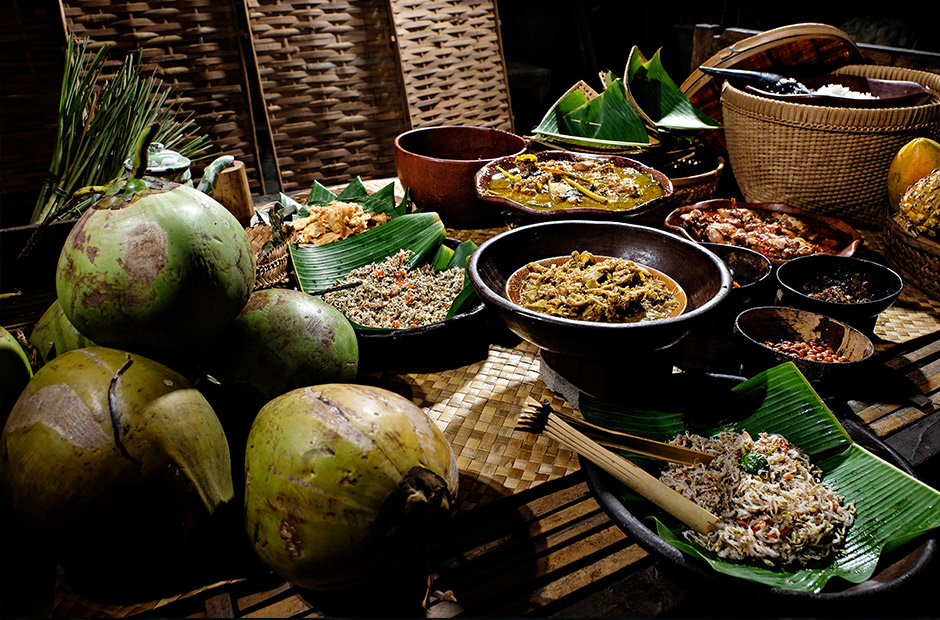Filipino cuisine is a treasure trove of diverse and mouthwatering flavors. From savory to sweet, each dish is a testament to the rich culinary heritage of the Philippines. In this section, we will shine a spotlight on some of the most popular Filipino dishes that will surely make your taste buds dance with delight.
One iconic dish that has gained international recognition is adobo. This flavorful dish consists of meat, typically chicken or pork, marinated in a mixture of soy sauce, vinegar, garlic, and spices. The meat is then slow-cooked until it becomes tender and infused with the aromatic flavors of the marinade. Adobo is often served with steamed rice, and its tangy and savory taste is simply irresistible.
Another beloved Filipino dish is sinigang, a hearty and sour soup that showcases the use of tamarind as a key ingredient. This comforting soup usually contains a variety of vegetables, such as kangkong (water spinach), radish, and eggplant, along with meat or seafood. The sourness of the tamarind gives sinigang its unique and refreshing flavor, making it a popular choice especially during rainy days.
For those with a penchant for grilled delights, inihaw na baboy (grilled pork) is a must-try Filipino dish. Marinated in a mixture of soy sauce, calamansi juice, garlic, and spices, the pork is then grilled to perfection, resulting in succulent and smoky flavors. This dish is often enjoyed with a side of spicy vinegar dipping sauce, adding an extra kick to the already delectable grilled meat.
No exploration of Filipino cuisine would be complete without mentioning halo-halo. This beloved dessert is a delightful medley of various ingredients, including sweetened fruits, jellies, beans, and shaved ice, topped with leche flan (caramel custard) and a drizzle of evaporated milk. The combination of textures and flavors in halo-halo creates a refreshing and indulgent treat that is perfect for cooling down on a hot day.
These are just a few examples of the many mouthwatering dishes that comprise Filipino cuisine. Each dish tells a story and represents the vibrant culture and culinary traditions of the Philippines. So, whether you’re a seasoned food enthusiast or a curious traveler, exploring the magical flavors of Filipino cuisine is an adventure that should not be missed.

The unique flavors and ingredients used in Filipino cooking
Filipino cuisine is a treasure trove of unique flavors and ingredients that tantalize the taste buds and transport you to a world of culinary magic. The diverse range of influences, including Malay, Chinese, Spanish, and American, have shaped Filipino cooking into a vibrant and distinct culinary tradition.
One of the defining characteristics of Filipino cuisine is its bold and vibrant flavors. From the rich and savory adobo, a dish marinated in a mixture of vinegar, soy sauce, and spices, to the tangy and refreshing sinigang, a sour soup made with tamarind and an assortment of vegetables, each dish offers a burst of flavors that is both comforting and exciting.
The use of indigenous ingredients is another aspect that sets Filipino cuisine apart. From the aromatic pandan leaves, which lend a unique fragrance to desserts like bibingka and kakanin, to the pungent bagoong, a fermented shrimp paste that adds depth of flavor to dishes like kare-kare, Filipino cooking incorporates a wide range of ingredients that are native to the archipelago.
The inclusion of tropical fruits such as mangoes, coconuts, and bananas adds a delightful sweetness to many Filipino dishes. The creamy and luscious coconut milk is a staple in dishes like ginataang manok (chicken in coconut milk) and bicol express (spicy pork stew), while the tangy sweetness of ripe mangoes is showcased in desserts like mango float and halo-halo.
Filipino cuisine also embraces the concept of “balancing flavors,” creating dishes that combine sweet, sour, salty, and savory elements in perfect harmony. This can be seen in dishes like pancit palabok, a noodle dish topped with a flavorful shrimp sauce, crushed chicharon (pork cracklings), and a squeeze of calamansi juice, creating a symphony of tastes that dance on the palate.
Exploring the unique flavors and ingredients used in Filipino cooking is like embarking on a culinary adventure. From the mouthwatering aroma of garlic and onions sizzling in a pan to the explosion of flavors in each bite, Filipino cuisine never fails to captivate and delight. So why not embark on a journey of flavors and discover the magic of Filipino cuisine for yourself?
